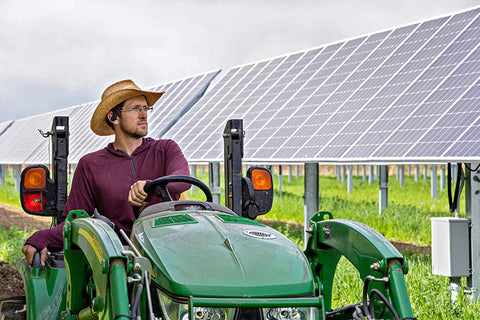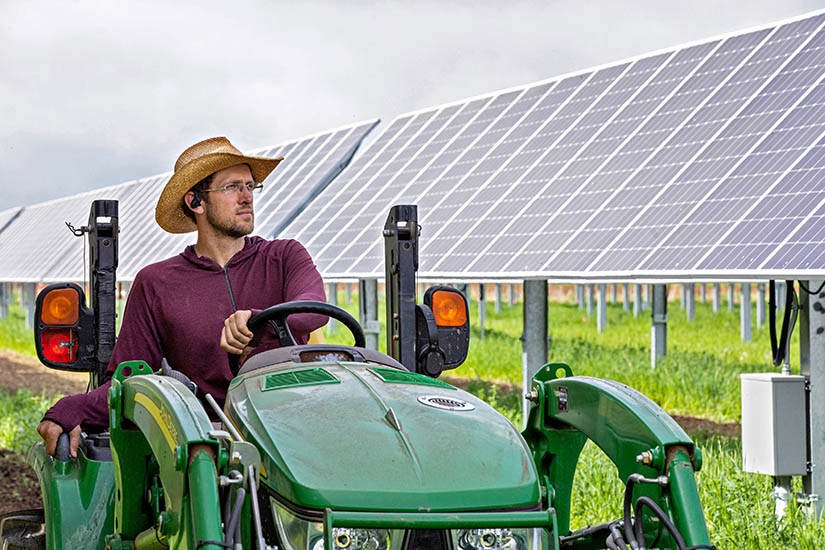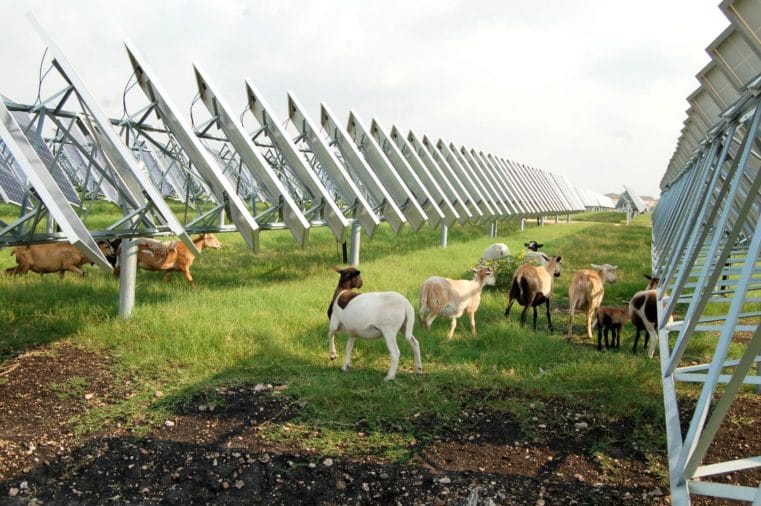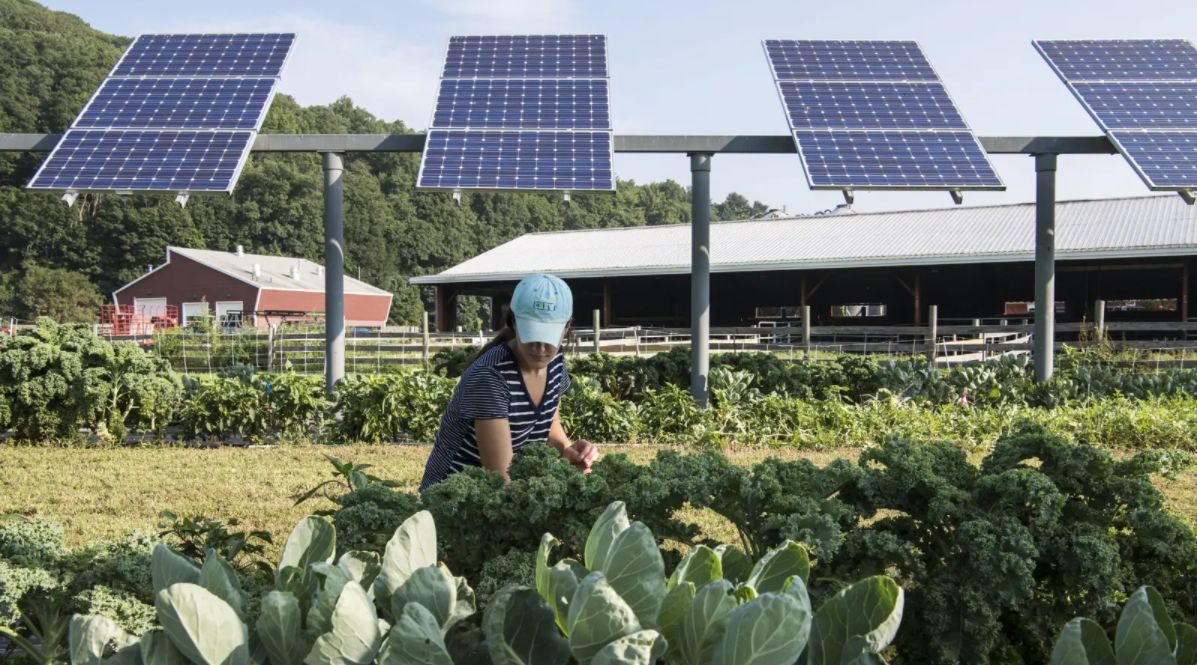A growing number of farms and agricultural businesses are looking to solar to power their daily operations. Thanks in part to the Solar Energy Technologies Office's investments, the cost of going solar has declined, enabling more installations across the country. Consider these questions to help you determine what’s best for you and your farm.

WILL SOLAR MODULES HEAT UP AND DRY OUT VEGETATION OR CROPS UNDER THE MODULES?
Solar modules will actually cool crops and vegetation underneath during the day due to shading, and keep them warmer at night. Studies have shown that these temperature differences cancel out and that mean daily crop temperatures were similar under modules compared to full sun crops and there was no impact on crop growth rates. Modules can provide farmers the ability to grow shade-tolerant crops and to diversify crop selection, while also extending growing seasons and reducing water requirements. One study found that shading from solar modules produced lettuce crop weight equal to or greater than lettuce grown in full sun.
CAN WILD ANIMALS LIKE ANTELOPE OR ELK GRAZE UNDER SOLAR MODULES?
Yes, however, if desired, a security fence can keep out larger animals if they are deemed to be a damage risk to the modules. Fencing can be built to accommodate smaller animals such as kit foxes. Areas beneath the modules can be reseeded to provide habitat and forage to pollinators, birds, and other small species.
CAN DOMESTICATED ANIMALS LIKE SHEEP OR CATTLE GRAZE AT GROUND-MOUNTED SOLAR FACILITIES?
Sheep are commonly are being used for grazing for vegetation control at solar facilities in the United States and Europe as sheep do not climb on or harm the modules. Raising the PV modules in height is not necessary to accommodate grazing as vegetation is accessible beneath the modules at standard heights. Cattle grazing is generally not compatible with PV facilities due to the risk of damage to modules. Sheep grazing to control vegetation growth can benefit local shepherds, solar operators, and the land due to a reduction in mowing, herbicide, and other vegetation management needs.
WHAT IS THE IMPACT OF SOLAR MODULES ON BIRDS OR OTHER WILDLIFE SPECIES?
Solar modules create an opportunity for avian interactions. PV modules are generally less reflective than windows and have been installed and monitored for avian impacts at numerous airports. Nonetheless, avian injuries and mortalities may occur through collisions with power lines, vehicles, fencing, and solar equipment and structures such as modules. There are some concerns that birds might misconstrue solar installations for bodies of water and attempt to land on them, but this has not been proven. A 2017 comprehensive survey of all solar and bird interactions in the UK determined that “bird collision risk from solar panels is very low. There is likely to be more of a collision risk to birds presented by infrastructure associated with solar PV developments, such as overhead power lines.”
Solar modules require the use of other electrical equipment, such as inverters and connection boxes, which emit some noise. The frequency of most inverters is 50-60 Hz, the same as AC electricity in your home or commercial building, which is within the range audible to humans and well below the higher frequencies used to repel animals. Sound is generally not audible at the edge of the fenced boundary, but if audible, the sound is similar in volume to background noises and dissipates to inaudible 50 – 150 feet from the edge of the boundary.




